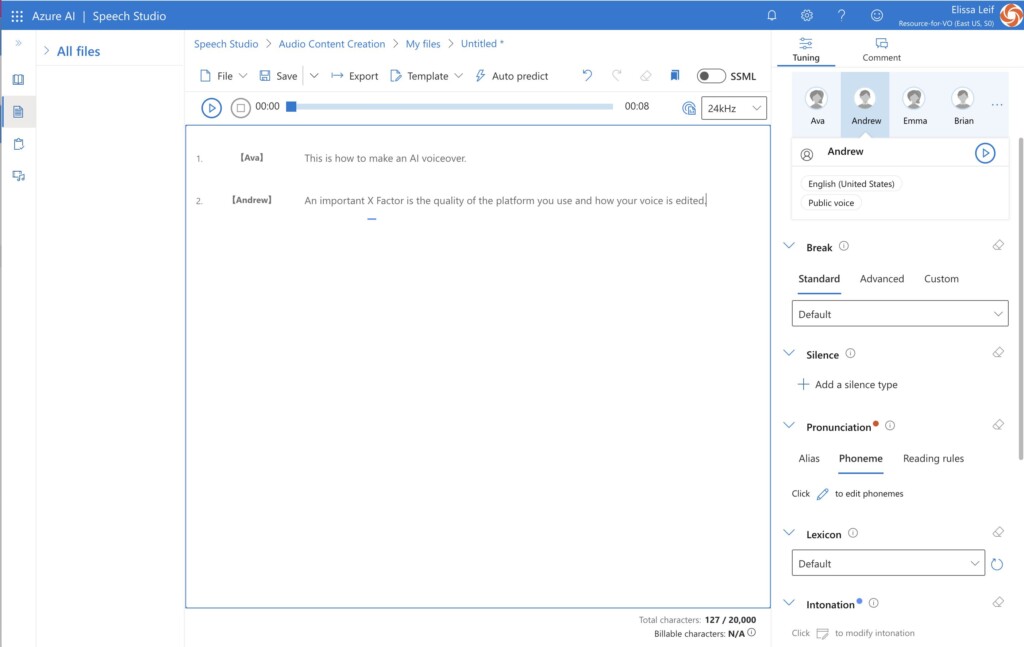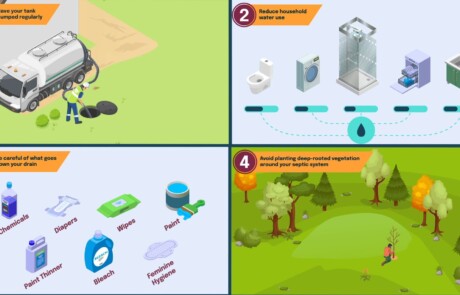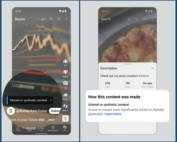AI voice vs human voiceover? This choice often arises on video projects these days. Can you tell the difference in these two videos MiniMatters produced?
Human Voice or AI Voice?
This first video uses the voiceover to grab attention and assert clarity at the start, and for the closing call to action–two great places for a voiceover.
The second video uses the voiceover throughout, which is common for animated videos.
Which of the videos featured a live voiceover artist and which was an AI-produced voice? Read on for a list of key pros and cons of human voice versus AI voices. The answer is at the end of the post.
AI Voices Are Getting Better, But There Are Other Considerations
If you couldn’t tell for sure which voice was created by AI, you are not alone. With improved technology, you can generate AI voices that are similar to human voices. And where the AI voices are lacking, audio adjustment tools in the AI software can help make up the difference.
But there are also other factors to consider in the choices of AI voices. These include quality, efficiency, the workflow and timing needs of particular projects, budget, and how you or your organization feel about authenticity and the role of professional voice artists.
Here’s a list of pros and cons that we consider in discussions with our clients and which may help you make this choice in the current moment. There’s also an important “X factor” to note.
Human Voice vs AI Voice – Pros and Cons
Human Voiceovers – Pros
- You can support voice artists who have worked to build careers in this field
- You can develop relationships with certain voiceover artists who come to understand your brand, tone, and content and who can reliably deliver good readings in their initial recording files
- Really good human voiceovers will have more unique and more subtle variations in tone that may work well with your script and the feelings you want to convey
- You can direct the voiceover artist in real-time in what is called a “directed recording session” to get exactly the recording you want
Human Voiceover – Cons
- You or your video production company may have to subscribe to an online voiceover platform or service to obtain a variety of auditions for your project. This audition process can take a bit of time
- The artist you have selected may be on vacation or have other commitments and not be able to record just when you need it for projects on quick turn-around
- Your artist may make a mistake in tone or pronunciation in their initial video files, and you may have to ask for a revision; this can further delay the production process
- To reduce mistakes and the need for re-recording, you or your video production company may need to spend time writing out a set of pronunciation and emphasis instructions for the voiceover artist; depending on the project, you even may need or want to participate in a guided recording session, which takes time.
- There’s a potential for extra charges and a need for more administrative time. Most often voiceover artists include one round of “pick-ups”–meaning correction of errors, pronunciation or tone, and perhaps some minor script changes. However, more extensive script changes are not included and may require adjustment of the contract and increased cost.
AI Voiceovers – Pros

MiniMatters uses sophisticated Microsoft Azure-based AI voice software for our AI voice projects.
- You instantly have your pick of voiceover artists, including those with different variations of English or who speak other languages. As a result, you will not have to depend on an uncertain audition process to obtain the variation, accent, or language you are looking for.
- The wide array of editing controls on some platforms enables you to adjust pronunciation, emphasis, the timing of pauses, etc. to get the reading that you or your colleagues or clients are looking for
- Speed of revision – you can just edit your online script in the AI software and output the audio file again anytime you want to make a revision
- No need for contracting – there’s no need to go through the somewhat time-consuming process of contracting and communicating with a voiceover artist that you are considering booking, and no need for a subscription to a voiceover service that helps handle the auditions, payments, tax forms, etc.
- Some AI software provides translation of scripts and the ability to use voices in other languages very simply, if somewhat imperfectly
- Some AI voiceover software is free or low-cost
AI Voiceovers – Cons
- Other than the voice artists who serve as base voices for the software, you are not supporting voice artists, for whom AI voices are a major threat to their livelihood
- As the number of base voices for North American English is relatively limited on most platforms, voices that represent African Americans, Latinx Americans, Asian Americans and Native Americans and particular U.S. regions are limited
- Some free AI voice software does not include a full array of editing features or base voices
- More advanced AI voice applications take some time to set up and learn
The X Factor for AI Voices
There is also an “X Factor” for AI voices. You may remember the days when you or your friends talked in “robot voices.” Using lesser technologies or more limited features of the AI voice technology available, you’ll probably find that you can tell the difference between AI and human voiceovers and discern the robotic-like tendencies with many AI voices. Thus, if you choose to use AI voices, it’s very important that you or your video production company use AI voice software that has enough voices from which to choose and editing features–and the capability to use those features–to prevent voices from sounding like artificial when you are aiming for realism.
The Answer
The voice in the first video was AI and the voice in the second video was real.
If you are considering voiceovers as part of your animated or filmed video production, please reach out. We’re happy to discuss both your human and AI voice options.







